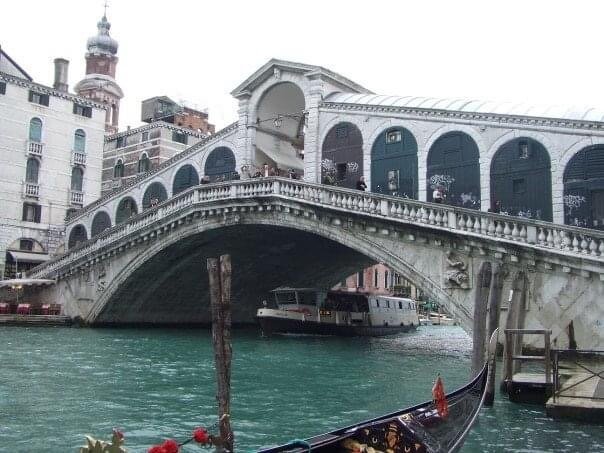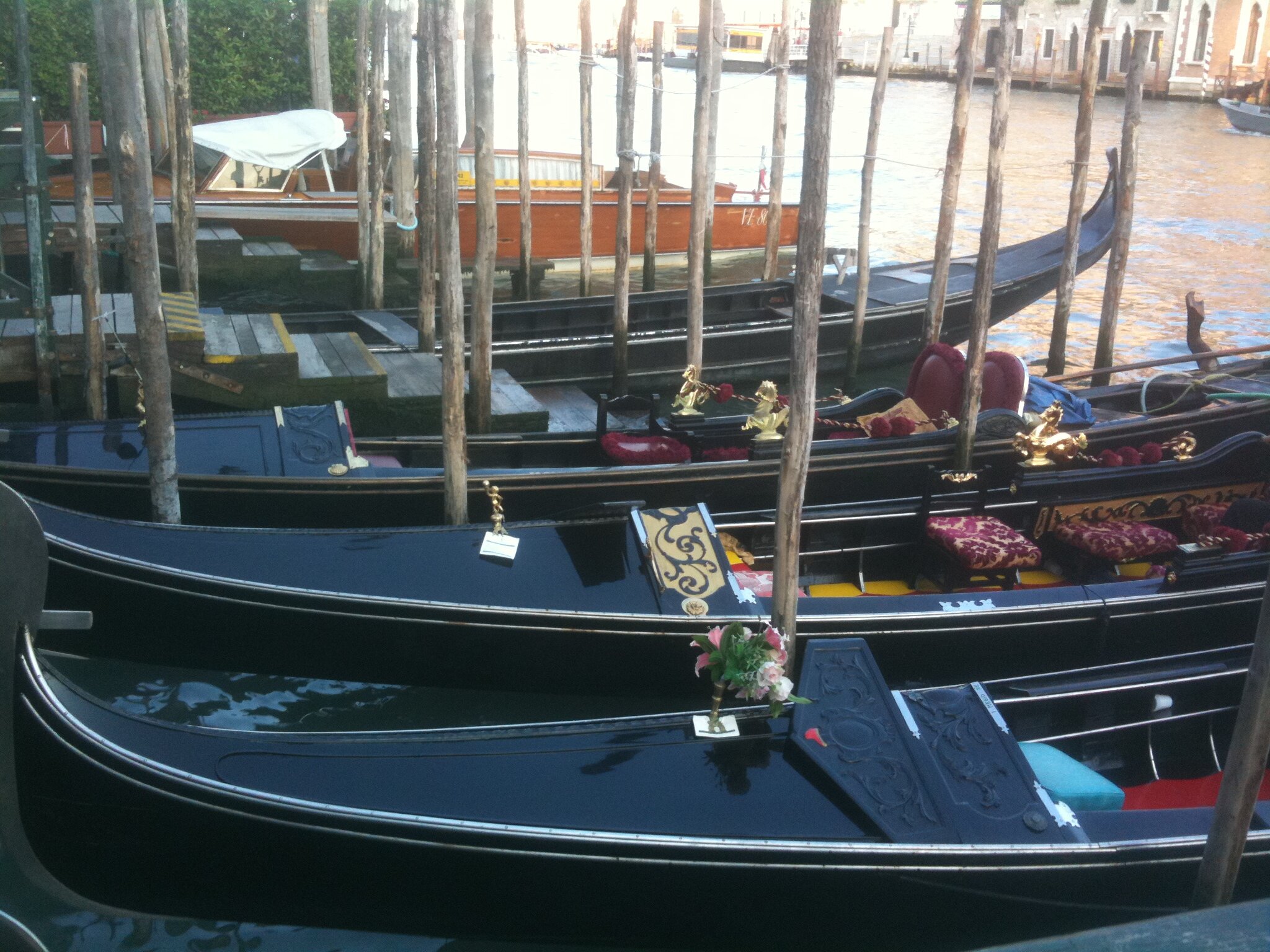Regional Features
Venice
Unsurprisingly, Venice, spread over 118 small islands within the lagoon, has been an UNESCO site since 1987, but Venice is a treasure trove for literary connections. I direct your attention to more comprehensive studies like this one to do justice. Here I offer only a starting place. As mentioned in the Introduction to the region post, I had not yet honed my ‘restaurant research skills’ on two trips to Venice. Read my friend Molly’s entry on Great Bars in Venice for some suggestions.
Back to the literary. Byron begins his Canto IV of Child Harold’s Pilgrimage in Venice in this way:
I stood in Venice, on the Bridge of Sighs;
A palace and a prison on each hand:
I saw from out the wave her structures rise
As from the stroke of the enchanter's wand:
A thousand years their cloudy wings expand
Around me, and a dying Glory smiles
O'er the far times, when many a subject land
Look'd to the winged Lion's marble piles,
Where Venice sate in state, throned on her hundred isles!The Ponte dei Sospiri (Bridge of Sighs) is an enclosed bridge, that as Byron suggests, connects the New Prison (Prigioni Nuove) to the interrogation rooms in the Doge's Palace. Byron, in fact, coined the English translation as ‘Bridge of sighs’. Another important bridge is the Rialto, which is the oldest bridge spanning the Grand Canal. Originally built as a pontoon bridge in 1181 and later a wooden bridge in 1255, now we see a Renaissance design completed in 1591. In William Shakespeare’s Merchant of Venice, Act 3, Scene 1, the character of Solanio asks “Now, what news on the Rialto?”. The great English Bard never visited Italy, but the popularity of these iconic landmarks was diffused even without the help of digital technology. (The 15th century European invention of the Gutenberg Press played a role.) Scholars believe the play was written between 1596-1597, but it was published in a quarto in 1600. I recommend reading or rereading the ‘tragedy of Shylock’ before a trip to ‘La Serenissima’; I taught it to grade 10 students for many years and enjoyed exploring the site specific references and context of 16th century Venice with them.
Once you arrive, a requisite, although ‘price gouging’, experience is a Gondola ride. Regardless, I would recommend it. On my second trip, we unabashedly donned cheap and cheerful carnival masks to float around in character. On that subject, experiencing Carnivale in Venice is still on my bucket list. My literary love, Byron, described his experience in a ‘poem’ called “So We'll Go No More a Roving” first included in a letter to his friend Thomas Moore in 1817. I include it here in full, because it is one of my favorites; it captures the essence of the literal after effects of Carnival in Venice, but also a reflection on aging and moving past youthful revelry:
So, we'll go no more a roving
So late into the night,
Though the heart be still as loving,
And the moon be still as bright.
For the sword outwears its sheath,
And the soul wears out the breast,
And the heart must pause to breathe,
And love itself have rest.
Though the night was made for loving,
And the day returns too soon,
Yet we'll go no more a roving
By the light of the moon.
Byron was a resident of Venice for about 3 years in total, 1816-1819. Famously, he lived in the Mocenigo Palace with at least 14 servants and animals such as a fox and monkeys. The central Palazzo, located on the Grand Canal, is now a museum that you can visit.
Central Venice is an island, of course, punctuated with canals both big and small. Yet, it is surrounded by other islands that you can visit via a pleasant boat trip. One of the most famous and closer islands is Murano, famous for the tradition of glassmaking, a tradition that started in the 13th century when Venice was a republic. Burano, on the other hand, is famous and photogenic for the rows of brightly colored homes.
While on the main island, however, you will not want to miss these attractions.
Visit Basilica di San Marco (Saint Mark’s Basilica) and seek out the four tetrarchs. I was left speechless the first time I gazed upon a picture of San Marco; again, I first encountered an image of this church in my AP Art History class. I remember being struck by the eclectic amalgamation of styles under one roof, or under many domes to be more precise. The church is perhaps most famous for representing the ‘Italo-Byzantine’ style, but you will notice Gothic elements such as the many spires on topping the main facade.
The structure dates to the 11th century but work, such as the gold mosaics on the interior took centuries to create. Gaze upon the exterior from the famous Saint Mark’s square, experience the predominance of gold on the interior and also walk on the balcony to keep a close up view of the bronze Cavalli di San Marco (horses of Saint Mark); they date from classical antiquity. Once back outside the cathedral, you should walk around the side and observe the porphyry statue of the Four Tetrarchs. It represents the group of four Roman emperors that ruled together as a ‘Tetrarchy’, a structure instituted by the Emperor Diocletian in 293 CE. A personal sidebar, when I travelled with my four friends in 2007, we referred to ourselves as the ‘four tetrarchs’, a nerdy inside joke that I am still proud of today. This sculpture has been attached to the side of the great basilica since at least the middle ages.
Explore museums, especially the Peggy Guggenheim collection for modern art. The Peggy Guggenheim is fascinating for the art it houses and the building itself, which was also the patron’s home from 1948 until the end of her life. It is a mid 18th century palazzo that was formerly known as the Palazzo Venier dei Leoni. The current namesake, Peggy, has an intriguing life as a dedicated collector and patron of the arts, which you will be able to explore throughout the beautiful space. I should clarify, Guggenheim stated she was not simply ‘a collector’ but ‘a museum’. In full, she stated: “I dedicated myself to my collection. A collection means hard work. It was what I wanted to do and I made it my life’s work. I am not an art collector. I am a museum.” Her ‘museum’ is robust, with Magritte, Dali, Kandinsky, Picasso, Pollack, and De Chirico, to name a few.
Drink a Bellini, the original Bellini, in fact, at the original Harry’s Bar. Opened in 1931 by Giuseppe Cipriani, it has had many VIP guests since its inception. Ernest Hemingway was a repeat offender during his time in Venice. The experience does not come cheap, but I am a sucker for ‘experiencing the original’ and Harry’s Bar is not ‘tourist trap’. In fact, it was made a national landmark in 2001. In addition to creating the bellini (prosecco and fresh peach puree) Harry’s Bar is home to the originally carpaccio (thinly sliced meat, served raw). My dad introduced me to this bar, and although pricy, it has true character and will always be a necessary stop for me in the “city of water.”
Verona
Verona truly is a gorgeous city to ramble around and explore; the memories remind me not to underestimate this spontaneous experience of a city as well. Personally, I think a happy balance is ideal, and it is always a good idea to research and even reserve restaurants before you set off. I had a special weekend getaway here with my mom. Verona is city that values the dining experience as evidenced by the number of Michelin recommended restaurants that cover a large swath in terms of price. The ‘fair Verona’ has also been awarded the UNESCO designation. The city has ‘one of the richest collections of Roman remains in northern Italy’ according to UNESCO, and in fact, showcases elements from the ‘Roman period, Romanesque, Middle Ages and Renaissance'.
Write a letter at the Casa di Giulietta (Juliet’s house), which is another popular tourist stop in Verona. It is a 13th-14th century house linked to a noble family named Capello. You can probably see where this is going. Capello seems similar to ‘Capulet’ but not close enough, in reality. The house has no true historical link to William Shakespeare’s Juliet; yet, I wouldn’t let this stop you from visiting. The atmosphere is jovial, and the house acts as a museum with a lot to learn from, even if the famed Juliet of Shakespeare’s play never lived here. As you can see from the website linked above, there is a balcony, perfect for a photo-op, even if not ‘historically accurate.’ The connection originated as Shakespeare does set his tragedy Romeo and Juliet “in fair Verona”. As mentioned throughout these entries on Veneto, Shakespeare never visited Italy, but he was inspired by Italian writers and Italian tales. Think of Juliet’s house as a further expansion of one of the most famous and enduring love stories, dare I say, of all time. For a visual sneak peak into Verona and the Juliet house in particular, watch the trailer for a rather saccharine ‘chick flick’ based around the concept of the Casa di Giulietta. Corny and conventional, sure, but provides a flirty introduction to the city.
Walk over the famous bridges to admire the Adige river. More than this, the bridges in Verona are architectural treasures to behold; specifically, the Ponte Scaligero (also called Castelvecchio) and Ponte Pietra are two of the most impressive. The former is 14th century, and the latter is a very ancient Roman bridge, completed in 100 BCE. Both had to be rebuilt as they were destroyed by German troops towards the end of World War Two. They were reconstructed with the original materials, however. As demonstrated in these too few lines about Verona, it is a characteristically Italian city displaying “2,000 year history: the Roman period, Romanesque, Middle Ages and Renaissance which have survived intact until the 19th century,”, according to the UNESCO website. Incredible bridges spanning these centuries of history lie a few kilometers apart, just around the river bend, in fact.
Visit the ‘arena’ and see a performance, if you have the opportunity. This so-called Arena di Verona is a Roman amphitheater which is still in use today as it has been extremely well-preserved. Originally built in the 1st century, specifically, in the year 30 CE, the Verona Arena could hold 30,000 spectators during ancient times. You can admire the incredibly intact structure from the outside and tour the inside during the day. The Arena normally has a very active concert schedule, and you can find out more information and buy tickets through the well-organized website.






